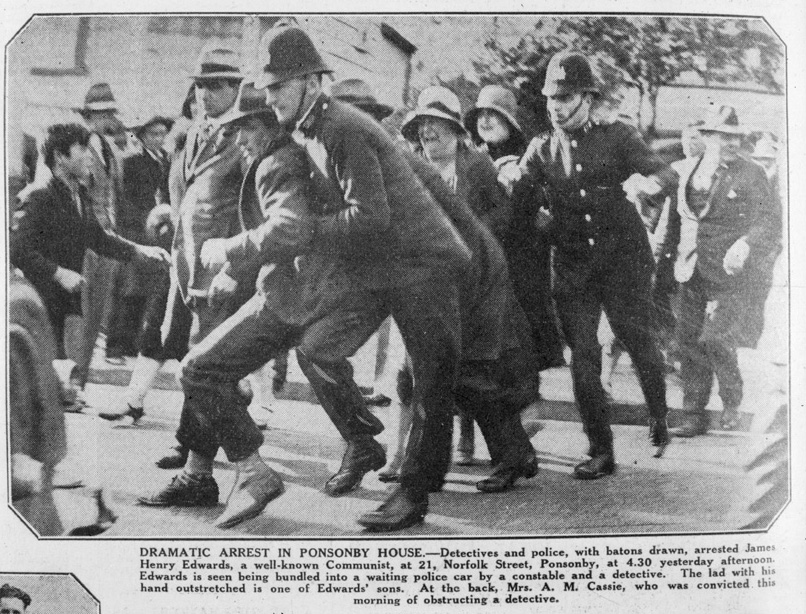Rank and file nurses, midwives and health workers across the country have showed us the way forward. By speaking out – via Facebook, in face-to-face meetings, by all sorts of media – by marching in protest and, above all, by taking strike action in July, the first in over twenty years, they made health a major public topic. And they gave a lead to all of us by showing how you can win improvements in pay and conditions. The government is on notice. Equal pay, understaffed hospitals, overworked and underpaid nurses: these are issues that have not gone away. And they will not go away, because nurses will keep organising.
NZNO members have voted to accept the latest offer from the District Health Boards. This offer, compared to what was on the table in October last year, represents a real step forward. Health workers on the tops of their grades will get pay rises of 3% in phases over 2018 and 2019, totalling between 12 – 13% by the end of 2019. New pay bands have been created. A lump sum of $2000 will be paid. The DHBs have agreed to set up a national framework around staffing safety, a major issue raised by nurses during the dispute. The government has announced 500 extra nurses, a plan not connected to the negotiations by inconceivable without the pressure striking nurses exerted. There is extra funding available to work on safer staffing, and the DHBs have committed to pay equity by the end of next year. The union will need to hold them to account to make this happen.
These are all wins, and represent an improvement on the first offer nurses voted down in November 2017. Nurses should take pride in this. If they had not voted down bad offers – not just once but four times! – these conditions would not have been won. Nurses, by taking industrial action, have broken the ice frozen over the strike weapon. After decades of industrial quiet, other workers can now follow their lead. Teachers and public servants currently bargaining or going in to bargaining can look to the nurses’ example for their own pay claims, and to the strike action they will need to win. All of this is positive.
But the settlement must evoke mixed feelings. Many nurses must be wondering what more they could have won had the fight been taken to the DHBs sooner, and harder. The commitment of rank and file nurses through this dispute has been inspirational. It is obvious that the overwhelming majority of workers in New Zealand backed the health workers – they have been here for us, and we were there for them in the rallies and pickets of the last six months. The nurses voted down bad offers and voted to strike – they taught us all how we should approach a fight. But they were let down by the defeatist misleadership of the NZNO. The (unelected) top paid staff and union leadership had no desire to push for a confrontation, recommending bad offer after bad offer. They were clearly out of touch with the anger of the rank and file of nurses. NZNO officials argued in favour of the latest offer to media while nurses were still voting, undermining the democratic process inside the union and making it harder for those arguing to hold out to get a proper hearing. NZNO officials reflect the dominant ‘partnership’ thinking that has hampered our union movement for so long – NZNO chief executive Memo Musa was once a chief executive of Whanganui DHB, so a boss! – and dragged their feet, holding back strike action. One strike was cancelled at the last minute. Mediation with the DHB was agreed to, stalling action in mid-year. Cee Payne and others spoke with visible reluctance each time an offer was rejected. After five offers had been put before them, and with the union leadership accepting and promoting the government’s claim that there is “no more money”, many health workers will have been ground down and voted yes out of a sense the struggle was stalling.
But we can build on this struggle. As one Registered Nurse wrote on Facebook: “We HAVE to hold them to account, safe staffing this time must be met or we DEMAND mandatory ratios. Pay equity must meet our demands, and at least equal teachers, equity settlement. We CAN NEVER allow the union to convince us to accept an offer in the future that will not maintain with inflation or retain pay rates with our equity partners.”
Those equity partners – the teachers – are now in a stronger position to strike for the pay increases they need thanks to the nurses. And strikes are back. Workers’ self-confidence is building, slowly perhaps, but in ways that cannot be ignored. There have been more strikes this year so far than in all of the last several years. The nurses across the country showed us leadership. If they were let down by their own officials, they gave a lesson to all the rest of us. It will be up to us to apply that lesson in organising on the job as rank and file unionists wherever we are, rebuilding workers’ confidence and determination. And it will be our job to back the nurses the next time their struggle resumes, in 2020, as the unfinished business of this campaign is taken up again.








